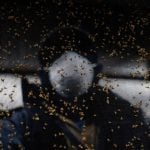An important aspect of cattle production, often given low priority, is the care and marketing of our cull cows.
It’s one of the areas in cattle production where producers need to be particularly aware of animal welfare issues that include decisions about not culling, shipping or putting down cull cows when it becomes necessary.
We all need to have a plan for getting rid of cull cows. If we keep them for any length of time, there may be ways to get more growth and productivity out of them. However, we also need to recognize some cows are of the age or have conditions where the best management decision is to ship them early.
Read Also

Harvest wraps up and fall work begins
At the Eppich famly ranch in western Saskatchewan, the fall harvest was successful with few breakdowns, cows and calves have been sorted and a new tractor has arrived
Decisions as to transportability must sometimes be made, and this is even more relevant with thin, multiple-lactation dairy cows for the beef market. In some areas of the country, dairy animals become beef animals, as in the case of dairy bull calves and cull dairy cows, and they make their way into the beef market. This is where co-operative crossover between dairy and beef producers will go a long way to strengthen both industries.
It’s important to start with a plan as to when and why to cull cows. I think many producers need to monitor cows’ age, productivity and longevity. This may mean that by a specific age a cow needs culling, regardless of if pregnant or not.
Some producers may have a select group of cows that is kept because reproduction is good but the calf is destined to be adopted to a younger cow at calving, so she becomes a surrogate on her last calving and culled right after that.
We all have a rough idea of the number of reproductive culls we will have each year based on the previous year’s open rate. The number of culls due to open cows will be quite variable, but usually in the five to 10 per cent range.
When saving replacement heifers, one must remember to keep common percentages in mind. Most producers keep the top 50 per cent of their heifer calves, which is 25 per cent of all the calves born. When one considers all the reasons for culling along with death loss in the herd, it is pretty common that close to 20 per cent of the cows are gone every year.
Culling due to lameness
Culling for lameness/arthritis may reduced if more attention is paid to hoof care trimming when necessary. Lame animals must be managed properly when culling. A producer needs to decide whether to keep them on feed and treat the ailment until the animal can be shipped, or ship for humane and compensation reasons. Some conditions will continue to get worse so immediate slaughter is the way to go. On-farm butchering may be an option.
Many options are available but until you are certain, hold off on treatment with veterinary drugs to avoid any residue issues.
After reproduction issues, lameness is the second most common reason for culling. Producers have realized that with proper trimming and examination of feet, many conditions can be successfully treated. There are many good trimmers and we need to utilize them better. They can add longevity into the herd, discover problems and many lamenesses that can be treated if discovered early.
With proper treatment of foot rot, hoof cracks, ulcers and sole abscesses, many animals can remain in the herd. Some farms have hoof trimming tables on site but many a lame cow is shipped because examination and the appropriate treatment associated with a good trim was not initiated. If animals are not going to be treated, then ship the earlier the better before weight loss and other health issues arise.
When the decision to ship is made, it is important to check the market. Old cows that are generally in good shape can just be shipped. But in other cases, a producer might find younger animals may render a greater profit by being fed out.
Larger producers often will work with someone else who markets cull cows. Many animals that are fed for a while will benefit from an implant program. Some youthful cows may fit into being recipients for an embryo transplant program, but health status will need to be checked for such things as Johnes disease and making sure their reproductive vaccination status is up to date.
If cows are open simply because there was a very tight window for breeding and they are youthful, they may fit into another usage but for sure would feed out nicely.
If a producer is unsure about the age of an animal, check its teeth. Bovines get all their permanent incisors by five. If permanent teeth are missing, the animal is likely more than 10 years old. By observing wear on the teeth and root exposure one can get a pretty accurate estimate of age. There are easily available charts to look at.
Checking age is extremely important on purchased cows but also on ones where ear tags have gone missing.
Cull cows can be an important extra income source and are worth looking after for both animal welfare and economic considerations — it all goes hand in hand.















